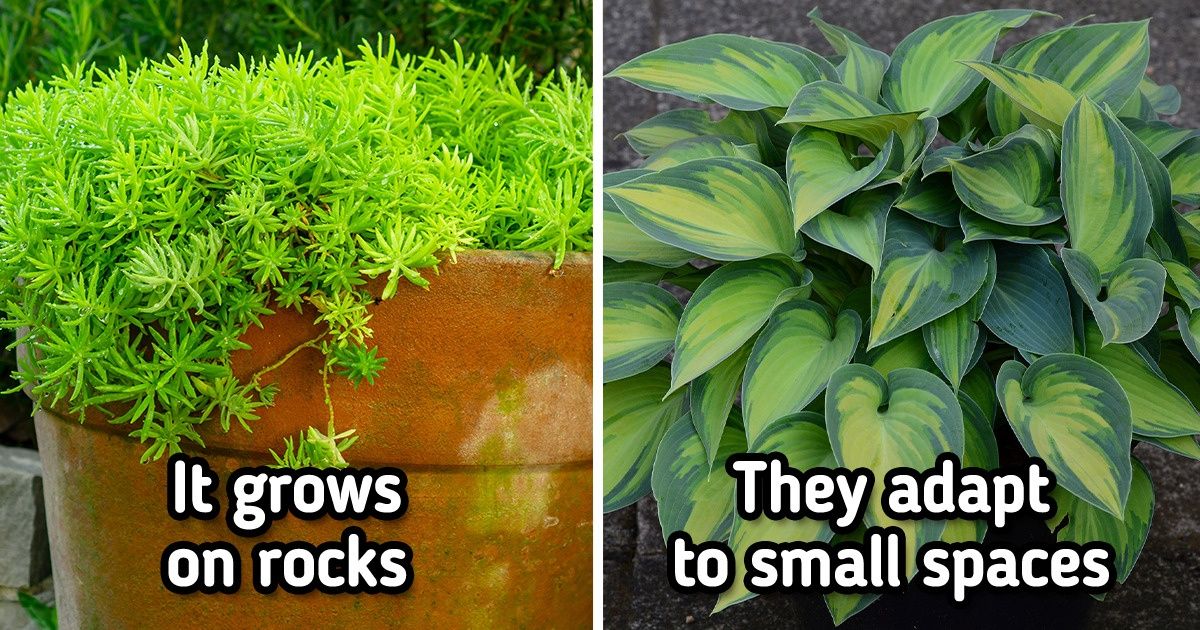My Ex Put His New Family Over Our Son, So I Served Him the Sweetest Revenge


For some people, gardening is not a day-to-day priority, but they still want all the ecological benefits and wellness that come from having an outdoor space that is full of life. Fortunately, there are options that generally require little care and can turn a gardening newbie into an expert.
Bright Side found some easy-to-maintain plants for its readers that are an inspiring choice when you want to beautify your garden.
Coleus is one of the choices used in garden design because of its foliage and variability of color patterns, the intensity of which varies with sunlight and other conditions. Varieties with dark leaves tend to tolerate more sun, while lighter varieties need more shade. One of its advantages is that it provides color even in shaded spaces without having to worry about faded flowers since all its splendor is in its leaves.
Care: Its flowers can detract from its ornamental value, so it is recommended to prune them as soon as they appear. It is of general use in the garden, as it’s also tolerant of outdoor pots and hanging baskets, but consider that it will require more frequent watering. It grows best in partial shade, with evenly moist, well-drained soil.
The daisy may have come to be considered a weed of the lawn, but at the same time, it serves as a decorative addition to some areas. They can grow in almost all types of soil, even in those that suffer from heavy compaction.
Care: As for light requirements, it is best placed in sunlight during the summer, spring, and fall and indirect sunlight during the winter. They need to be kept at the optimal temperature for growth and you should check the soil often to see whether it’s dry and therefore needs watering.
Hostas are known for their use in brightening up shady spaces and adding texture and color to the garden. They are a type of plant that can be kept in small areas.
Care: Avoid full sun all day, although those with yellow-gold leaves are more tolerant of light exposure than those with green, blue, or white leaves.
One of the better options for decorating a garden because of its different colors and shades, patterns including stripes, splashes, and even hearts, is the petunia. In addition, you can choose from different varieties with flowers of all sizes.
Care: Petunias, especially modern varieties, require very little maintenance. It is advisable to plant in full sun, in soils or substrates that have good drainage and are rich in organic matter and nutrients.
The garden geranium is also known as the zonal geranium, and it is used for decoration. There are color varieties that include shades of orange, pink, purple, red, white, as well as bicolor and double petal options. They are also fragrant plants.
Care: When planting outdoors, either in the garden or in pots, it is recommended to place them in full sun. Another tip is to water them before the soil dries out completely but without over-watering the soil or substrate.
Another aromatic option to incorporate into the garden is mint, due to its pest repellent properties and because it is useful to alleviate the symptoms of common colds.
Care: It requires soil with several inches of aged compost or organic matter content. In addition, it needs abundant watering and you will know when if you touch the top and it feels dry.
In places where color and beauty are needed, peonies are another option for a flower that will bloom during the spring and early summer.
Care: It is a hardy plant that can survive very low temperatures. It requires abundant sun, well-drained soil, and good air circulation. When planting them, you should provide them with some support from early on. However, you shouldn’t expect them to bloom during the first year of planting and you may even have to wait about 3 years before you can see them blossoming.
A plant with the ability to grow in rocky outdoor areas is the ‘Angelina’ Stonecrop. It can be placed in combination with plants that have dark foliage and used as ground cover or between rocks and walls.
Care: It can be placed in full sun or partial shade. Depending on the amount of sun it receives, the color of its leaves will vary (more sun results in more golden leaves). It prefers dry soils and requires less watering.
Daffodils can be grown in places where there is full sun exposure with well-drained soil. They can rot if kept in extremely wet grounds. In the garden, they can be placed in borders or between shrubs. One of their advantages is that they are drought tolerant.
Care: They require a good amount of natural light to bloom. They must be watered often, although with little water (they do not tolerate puddles). Once flowering is over, it is best to not cut the foliage of the plant but to let it wither on its own, as the leaves produce nutrients that are sent to the bulb and help in the next growth cycle.
Also known as the African lily or lily of the Nile, it needs to be planted in fertile, moist, and well-drained soil. It prefers acidic soil and needs to be planted during the spring when the ground temperature is at least 50°F (10°C).
Care: The Agapanthus loves the sun and is excellent for use in pots to decorate the garden or terrace. It should be watered regularly, but not too much since it can rot.
Do you prefer flowering plants or species with abundant foliage that fill your home with greenery? Tell us: what is your favorite flower and why?











